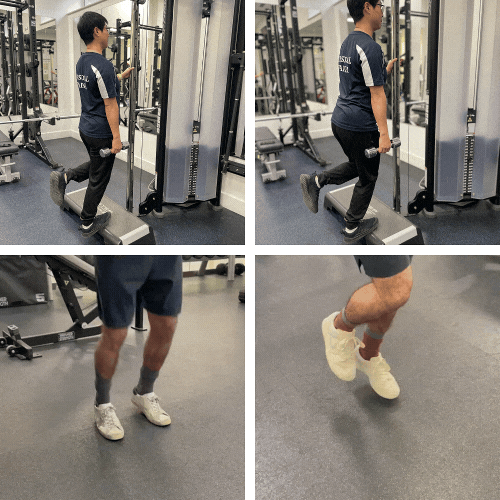When it comes to running, the calf muscles play a pivotal role in performance and injury prevention. Strong calves help absorb impact, maintain proper stride mechanics, and protect vital structures like the Achilles tendon. Unfortunately, many runners neglect targeted calf strengthening, which can lead to issues such as Achilles tendinopathy, shin splints or lead to numerous foot injuries.
The role of the calf muscles
The calf comprises two primary muscles – the gastrocnemius and the soleus that combine to form the Achilles tendon. The gastrocnemius is the larger muscle that gives the calf its shape, while the soleus lies underneath it and plays a crucial role during prolonged activities like distance running. Together, these muscles propel you forward, absorb ground reaction forces, and stabilise the ankle joint. The calf complex has to produce an incredible amount of force during running, the gastrocnemius produces about x3 times body weight however the soleus contributes significantly more, up to x8 times body weight, so it's important to adapt your calf exercises to reflect this.
Key calf exercises for runners
To avoid marathon or running injuries, physio Naomi says focus on strengthening the calf muscles with these key exercises:
1. Calf Raises – Perform with both straight and bent knees to target the soleus and gastrocnemius. Do 8-12 reps, 2 sets per side, twice weekly.
2. Pogo Jumps – 1 set of 20 double-leg jumps, followed by 3 sets of 20 single-leg jumps (skipping is also a good alternate exercise here).
3. Tip Toe Farmer Walk – Often performed with a kettle bell in both hands and walking a distance on your tip toes. There is no set distance but arguably if you are training for distance such as the marathon you could opt for a lighter weight and walk up to 100m or until your calves fatigue x2 sets.
4. Stretching/Foam Rolling – After all this calf work don’t forget to stretch or foam roll the calves:
Stretch the calf both with your knee straight and knee bent.
Hold each stretch for 20-30 sec x2 reps each stretch.
You can foam roll for about 5 mins- this can be particularly useful after long runs.
Practice consistently for 6-8 weeks, allowing muscles and tendons time to adapt.
Book a running assessment
Despite best efforts running injuries will occur due to factors such as poor strength, improper running form and, very commonly, load management errors.
A comprehensive running assessment, including biomechanical analysis and muscle testing, can help identify imbalances or weaknesses. Addressing these factors with targeted interventions can significantly reduce the risk of re-injury and improve overall performance.
Get in touch to book a running assessment with our physio if you have pain or with our biomechanist Emily if you want to review your running efficiency.



